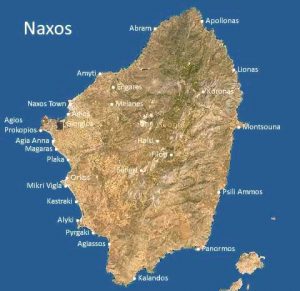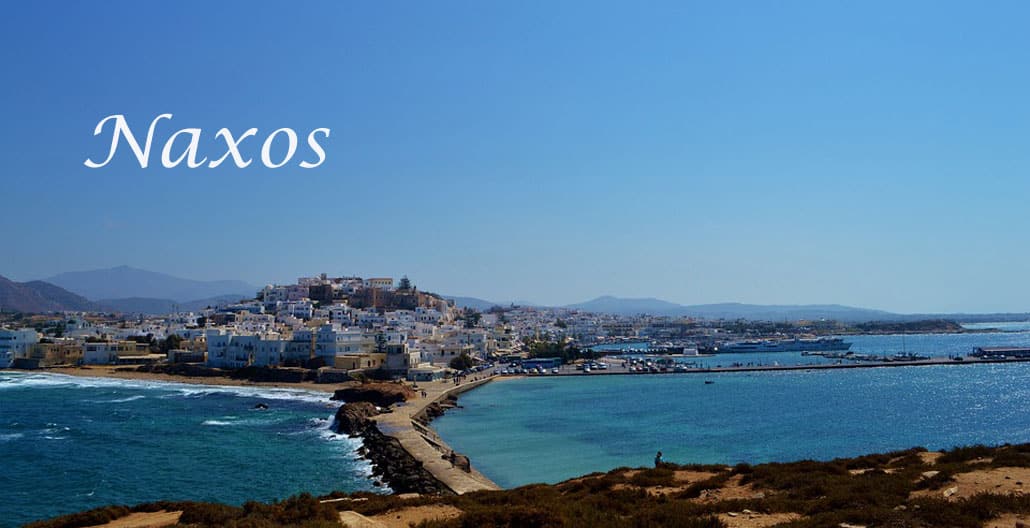Information about the Geography of Naxos

The shape of Naxos is oval and its coasts are a bit fragmented. Its mainly flat land is divided from North to South by a mountain range, the highest peak of which is Zas (1,004 m.) and rises in the center of Naxos. The longest length of the island is 18 miles, while the greatest width reaches 13 miles.
It has 15,154 inhabitants. Naxos or Chora, the capital of the island and the province, has many mansions (surviving from the time of the Duchy of Naxos), an archaeological and historical museum, many churches, as well as a Venetian fortress.
[ez-toc]
Geography and Terrain
Naxos has a total land area of approximately 430 square kilometers (166 square miles). The island is characterized by its varied landscape, which combines mountainous regions, fertile valleys, and beautiful coastline. The central part of Naxos is dominated by a mountain range known as Mount Zas or Zeus, which is the highest peak in the Cyclades, reaching an elevation of 1,004 meters (3,294 feet). The mountainous terrain provides stunning views and opportunities for hiking and exploration.
Coastline
Naxos boasts a diverse coastline that stretches for approximately 148 kilometers (92 miles). The island offers a mix of long sandy beaches, rocky coves, and secluded bays. The western coast is generally more rugged, with steep cliffs and rocky formations. In contrast, the eastern coast is characterized by long stretches of golden sandy beaches that attract tourists from around the world. Some of the notable beaches include Agios Prokopios, Plaka, Agia Anna, and Mikri Vigla.
Mountains
The most prominent mountain on Naxos Island is Mount Zas, also known as Mount Zeus. According to Greek mythology, this mountain was the childhood home of the god Zeus, hence its name. Mount Zas offers breathtaking views of the surrounding landscape and is a popular destination for hikers and nature enthusiasts. The mountain range extends across the central part of the island, providing a picturesque backdrop to the towns and villages nestled within its foothills.
Nearby Islands
Naxos is surrounded by several smaller islands, adding to the beauty and allure of the region. Some of the notable nearby islands include:
Paros: Located just west of Naxos, Paros is another popular island in the Cyclades known for its stunning beaches, traditional villages, and vibrant nightlife. It is easily accessible from Naxos via ferry or boat.
Small Cyclades: A group of small islands consisting of Iraklia, Schinoussa, Koufonisia, and Donoussa, lies southeast of Naxos. These islands offer a tranquil and untouched atmosphere, with pristine beaches and a slower pace of life.
Mykonos: Positioned northeast of Naxos, Mykonos is one of the most famous and cosmopolitan islands in Greece. Known for its vibrant nightlife, picturesque windmills, and beautiful beaches, Mykonos is a popular tourist destination.
Amorgos: Situated southeast of Naxos, Amorgos is a mountainous island with rugged cliffs, picturesque villages, and crystal-clear waters. It is known for its rich history, including the Monastery of Panagia Hozoviotissa, which is perched on a cliffside.
These nearby islands offer opportunities for day trips or island hopping, allowing visitors to explore the diverse beauty of the Cyclades archipelago.
